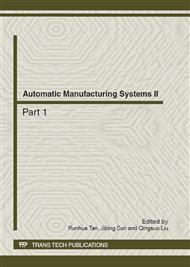p.1001
p.1007
p.1011
p.1019
p.1023
p.1029
p.1033
p.1037
p.1042
Driver Study of Touch Screen Based on S3C2440 and Embedded Linux
Abstract:
As one of Linux development directions, embedded Linux has many achievements and mature products. Its stability, reliability and the high efficiency is being proved by the facts. Linux has a great potential in the embedded area, which is loved by many businesses, scientific research units. The embedded Linux opens the source code, provides technical support widely and has good extendibility, supports a lot of hardware. All these are the advantages of embedded Linux. Touch screen has been an important human-computer interaction device, for they are light, flexible and take up less space. Most mobile devices offer a touch screen which is used together with a pen in order to take the role of the mouse for application control. A kind of touch screen control system based on ARM and Linux is introduced in detail. Circuit diagram and touch screen working principle is given. In this paper, touch screen driver based on embedded Linux is designed, analyzed and transplanted. Finally, touch screen can be used normally after calibrating.
Info:
Periodical:
Pages:
1023-1028
Citation:
Online since:
June 2012
Authors:
Keywords:
Price:
Сopyright:
© 2012 Trans Tech Publications Ltd. All Rights Reserved
Share:
Citation:


